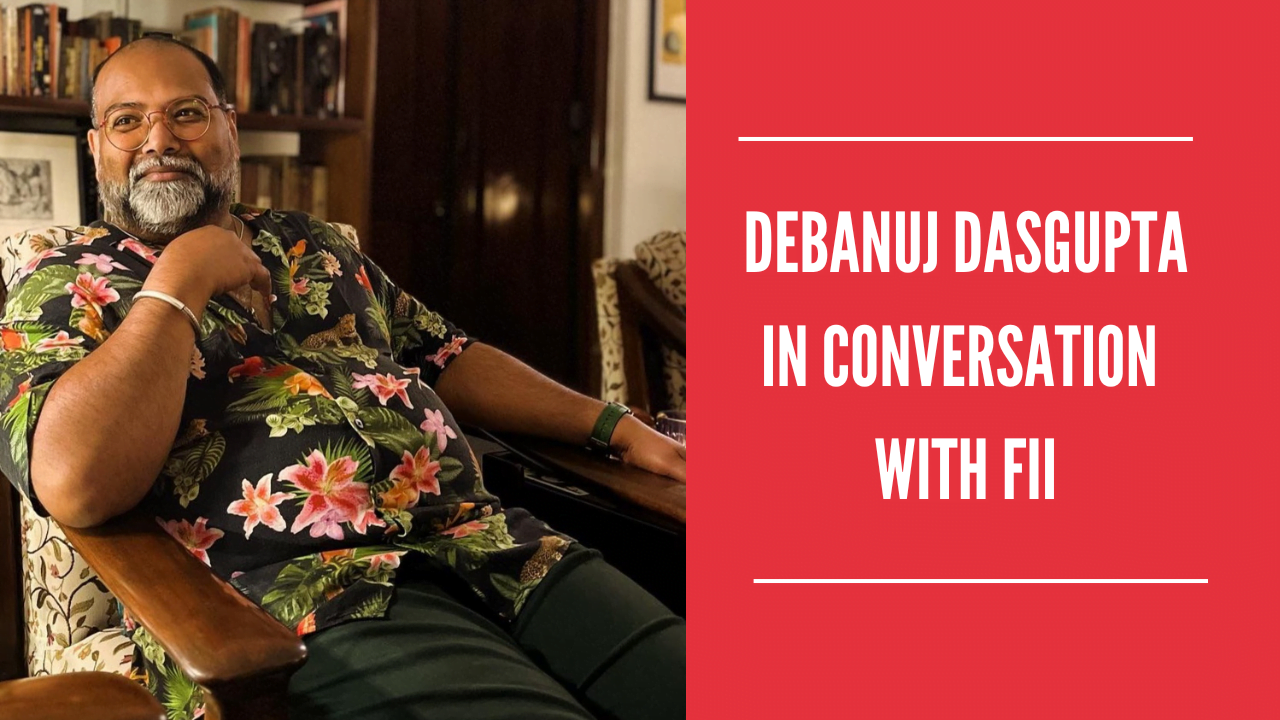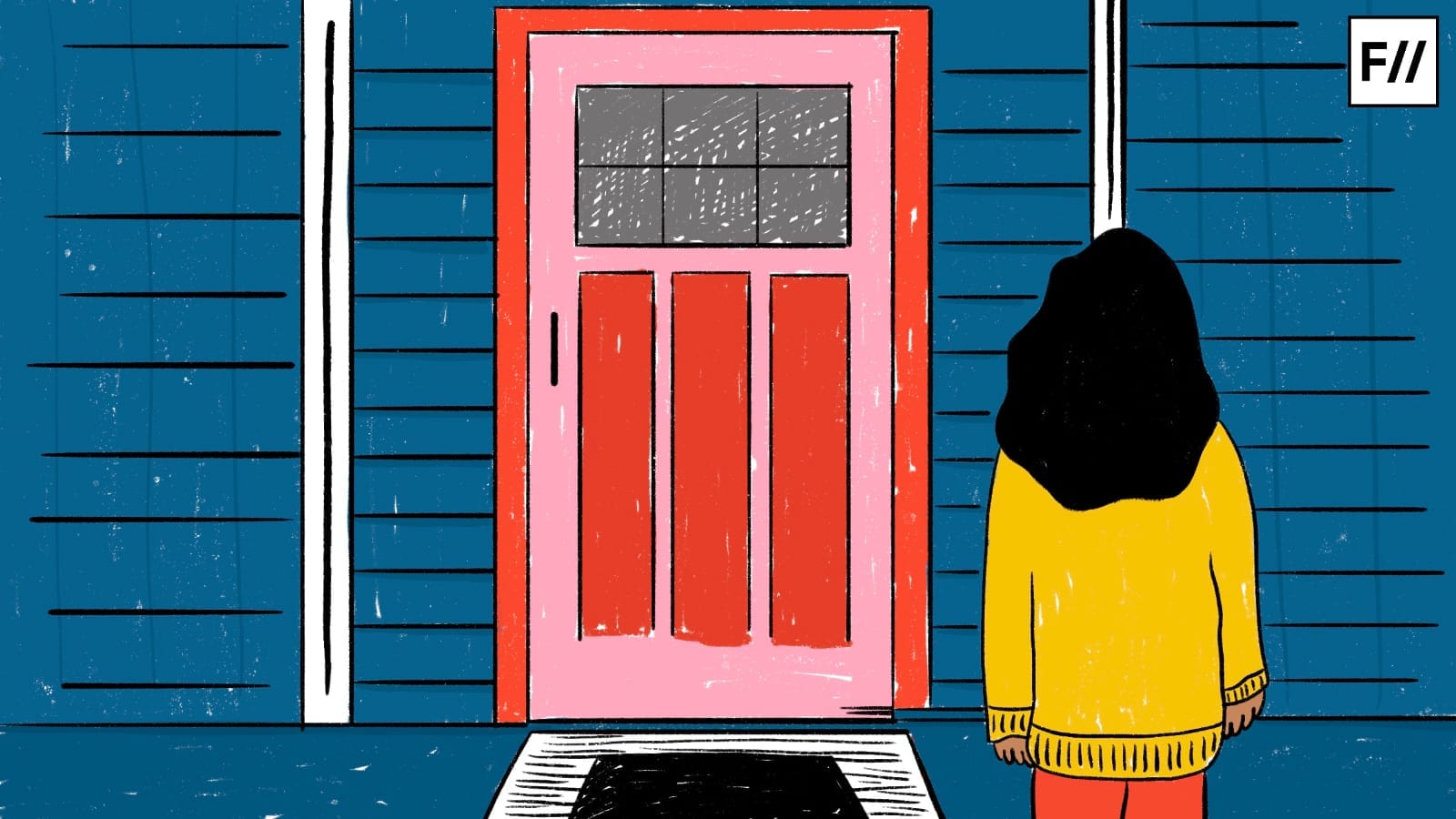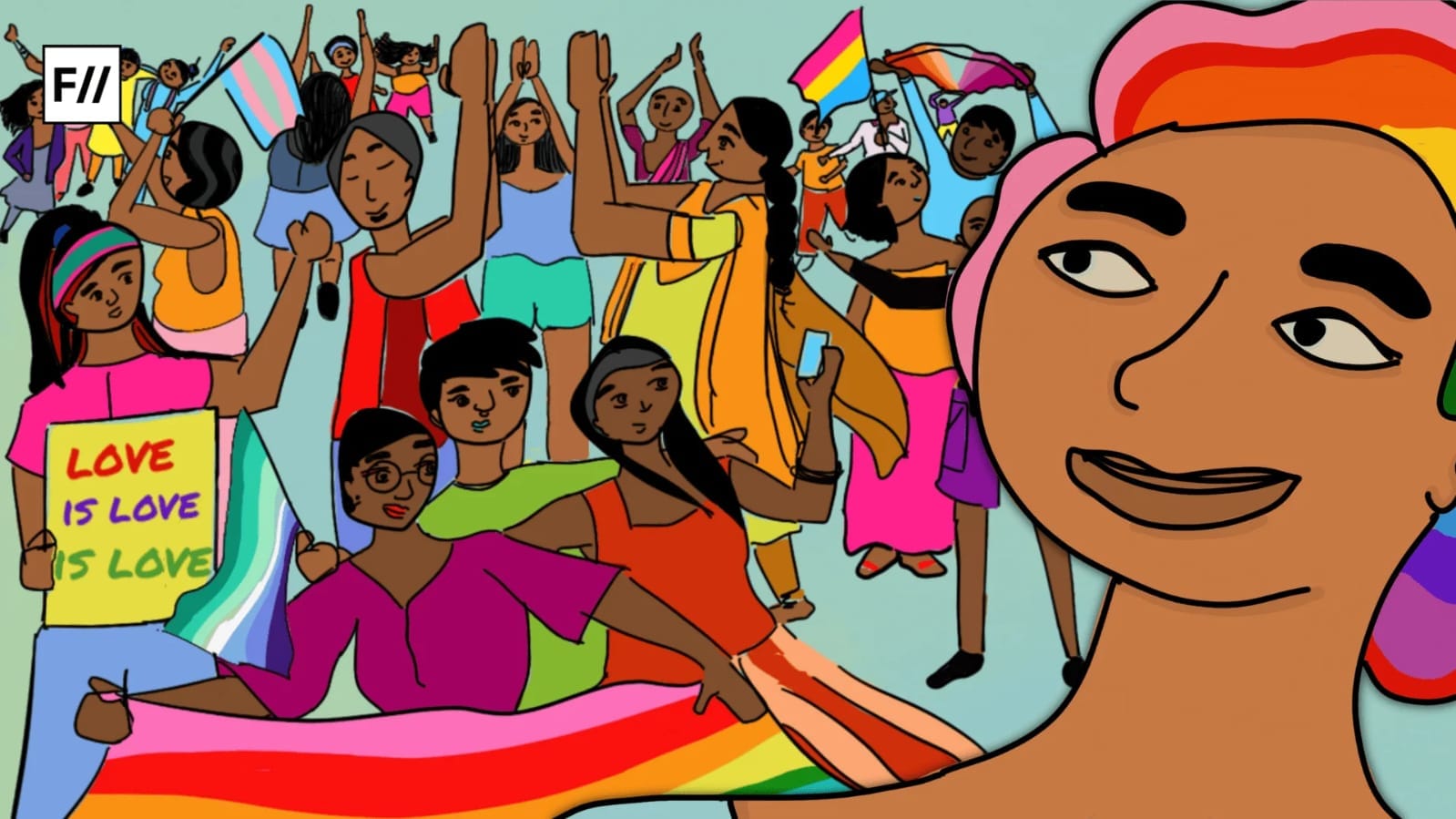Debanuj DasGupta is Assistant Professor in Feminist Studies at University of California, Santa Barbara. Debanuj’s research and teaching interests are broadly related to neoliberalism, religious extremism and bio-politics in contemporary United States, Argentina and India, for which they have received prestigious fellowships and awards from the Social Science Research Council, the Ford Foundation and the University of California Humanities Research Institute. Debanuj’s work has been published in prominent journals such as GLQ, Journal of Human Rights, Disability Studies Quarterly, Contemporary South Asia. They are co-editors of Friendship As Social Justice Activism: Critical Solidarities in a Global Perspective (Seagull Press); Queering Digital India (University of Edinburgh Press) and Queer Then & Now (Feminist Press).
FII: Tell us a bit about yourself and your work as an academic and activist
Debanuj DasGupta: I am an Assistant professor in Feminist Studies at the University of California Santa Barbara and I have also worked at the University of Connecticut in the Department of Geography and Women’s Gender and Sexuality Studies. Broadly speaking, my research is at the intersection of feminist geography and Queer and Trans Studies. The three keywords in my work are bodies, borders and places. I look at them through the lens of sexuality, desire and gender identity.
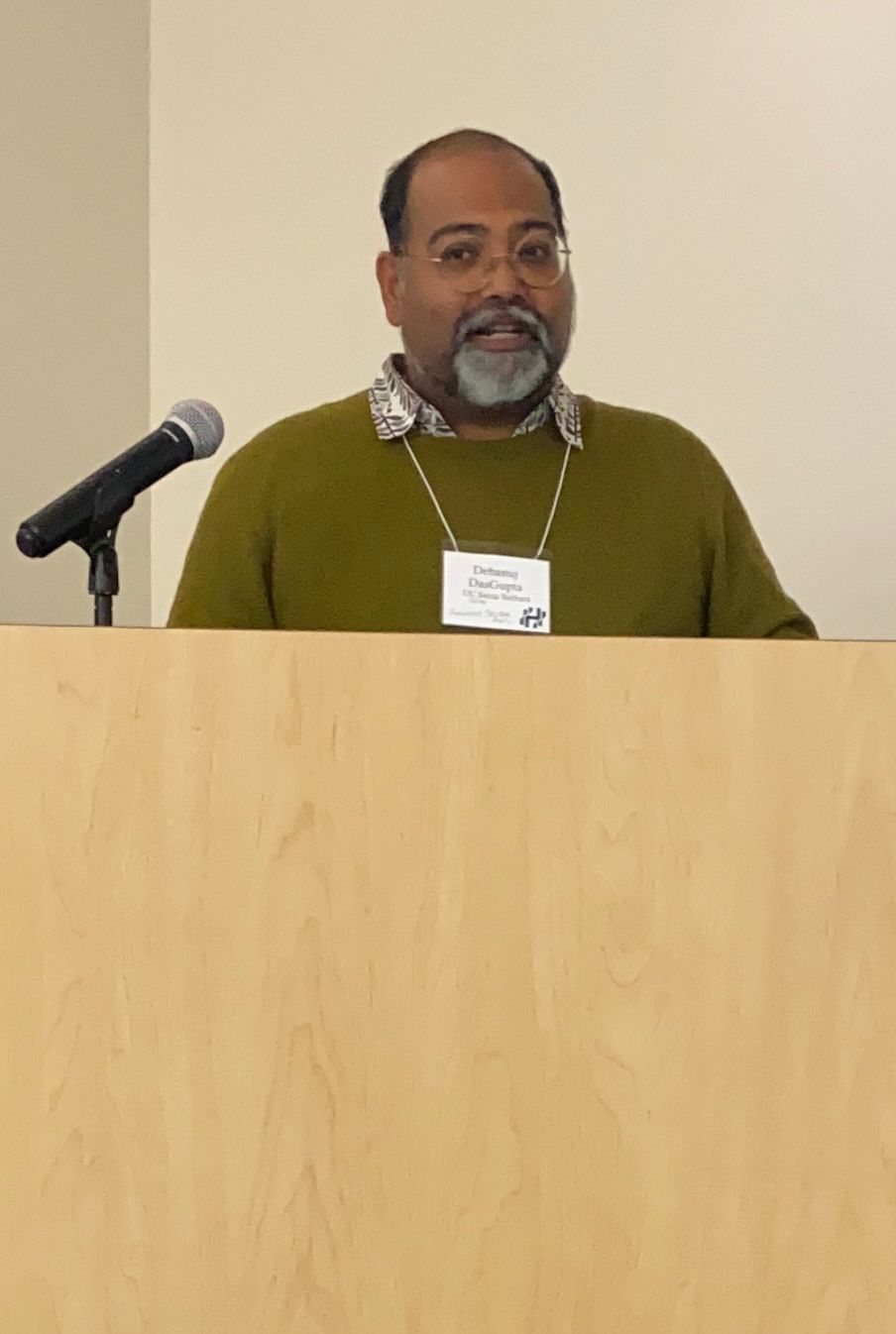
My work stems out over 30 years of activism.
FII: Tell us a bit about the early days of queer activism in Kolkata in the 90s. What challenges did you face?
Debauj DasGupta: In Presidency College, I met filmmaker Parvez Sharma and he introduced me to a group of other gay men and Pawan Dhall who is a well-known activist and writer. From Pawan’s house, we started bringing out a journal called Counsel Club.
We formed a support group. It was pretty clandestine. Parvez Sharma published a newspaper article about lesbians in India and we received hundreds of letters. We would write back to them, saying that we are meeting at an old member’s house in Tollygunge and that we shall stand with a rose in front of the Tollygunge metro from where we can take an auto.
At a conference on the Histories of Alternate Sexualities in South Asia, I met Anjali Gopalan who eventually founded Naz Foundation, Shivananda Khan who was the founder of Naz project in London. Anjali was trying to set up Naz in India as an HIV prevention program. There was nothing of that sort in Kolkata. So in 1994, I set up the first HIV prevention program for gay men, men who have sex with men, kothis and hijras in Kolkata.
Anjali was trying to set up Naz in India as an HIV prevention program. There was nothing of that sort in Kolkata. So in 1994, I set up the first HIV prevention program for gay men, men who have sex with men, kothis and hijras in Kolkata.
Debanuj DasGupta
The main challenge was definitely the taboo. There were two layers of taboo while talking about HIV AIDS and STDs and about men who desired other men. At that time, the only “queer” figures that India knew were the Hijra communities. Even though Hijras are thought to have magical powers, they are still marginalised. There’s class and gender discrimination. They are looked at as ‘disgusting’ figures.
Moreover, nobody wanted to rent us an office space. So we ended up opening up an office at our members’ house from Naz.
FII: You have worked with LGBTQIA+ immigrants and asylum seekers in the USA. Tell us a bit about your work there.
Debanuj DasGupta: I arrived in the US as a graduate student and I eventually moved to New York in 1999 and in early 2000, I moved there finally.
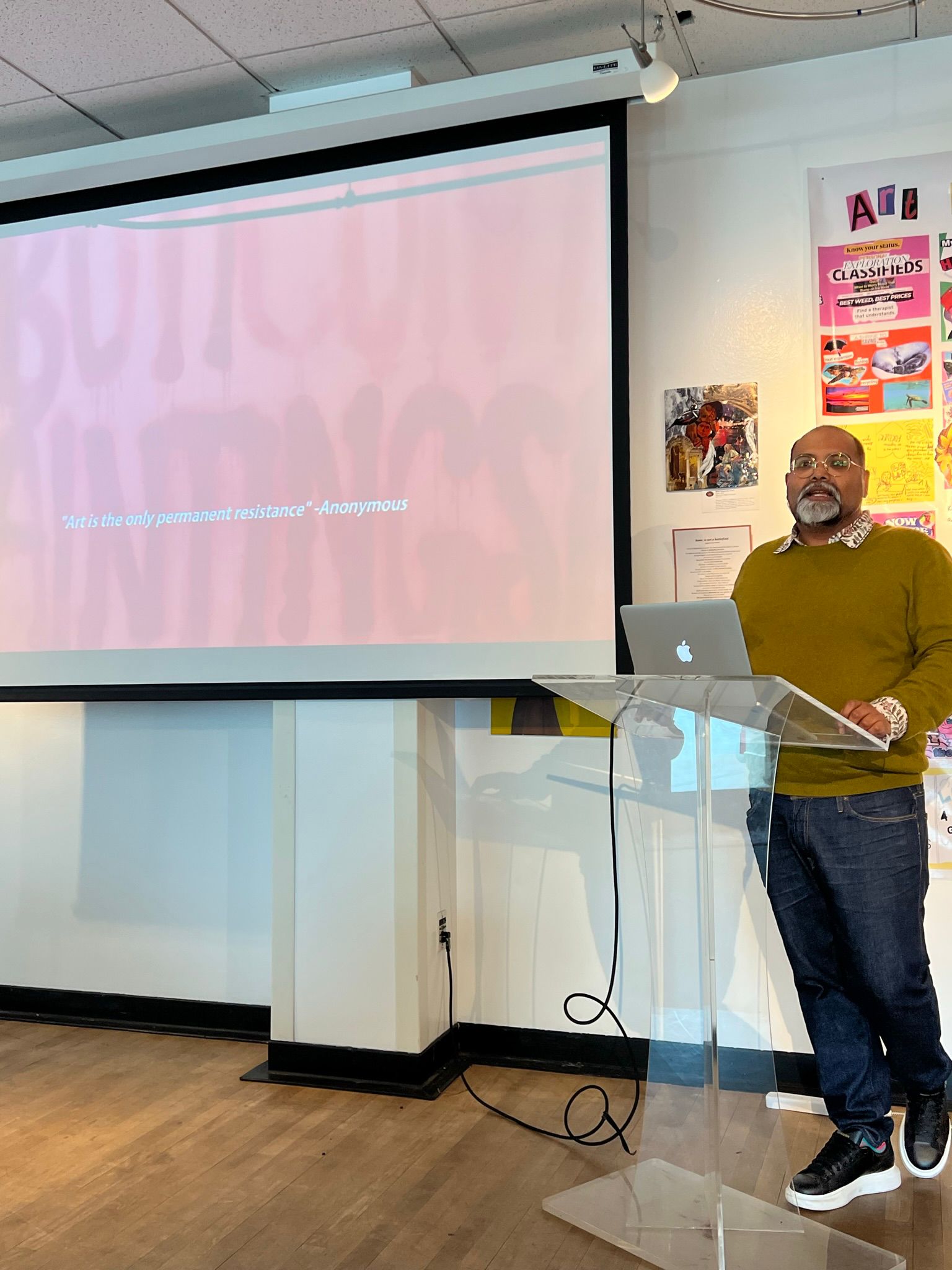
’96 is the year when three big things happened in the US. The Immigration Reform Act – the toughest immigration reform act enacted in the history of the US where immigration and criminalisation gets co-constituted. This introduced a lot of restrictions – including barring immigrants from accessing public benefits. There was also the “don’t ask, don’t tell” policy in the US army which essentially said, don’t ask about sexuality, don’t tell. Finally there was DOMA, the defense of marriage act. What also gets passed and written into law in the early 1990’s is the HIV ban on immigration. From 1989 to 1992, because of HIV, senator Jesse Helms, a Republican senator, brought this bill to ban those with HIV from entering the United States ostensibly because the healthcare costs would go up and it would put the US public at risk. In the early histories of all pandemics there’s a fear for foreigners. There’s always an imagination that the infection or the virus is coming from a foreign land. By 1992-93, this HIV ban got constituted into a law.
So in January 2000, I moved to New York and I found a vibrant community of queer South Asians – including Bengali critical and artistic communities. I got involved with something called Diasporadics. It was a cultural festival of the diaspora in the US and Canada. I was involved in SALGA – South Asian Lesbian and Gay Association. At the same time I was trying to find immigration solution lawyers and was traumatised by the fact that I was undocumented at that time. I kept it a secret and then 9/11 happened. We lived under a reign of terror as people of colour and immigrant communities.
There were a lot of attacks on the South Asian community. Some of us responded by forming self help teams. I got a small gig working with Columbia University on documenting the impact of 9/11 on the South Asian community. Many of us queer and women folk were getting beaten up. Women who were facing domestic violence within the family were afraid to call cops now because if their husbands were undocumented, they would be taken into detention. Then the fact that LGBTQ South Asians existed was enough to target us. Not just because of our race but because we were effeminate or queer, we faced sexualised racial violence. This was not being talked about in the civil liberties war that was happening in the wake of 9/11. So I got really pushed into doing intersectional immigrant justice work during this reign of terror – the politics of survival, as I called it. It was as simple as finding who worked at the church and finding 10 pound bags of rice.
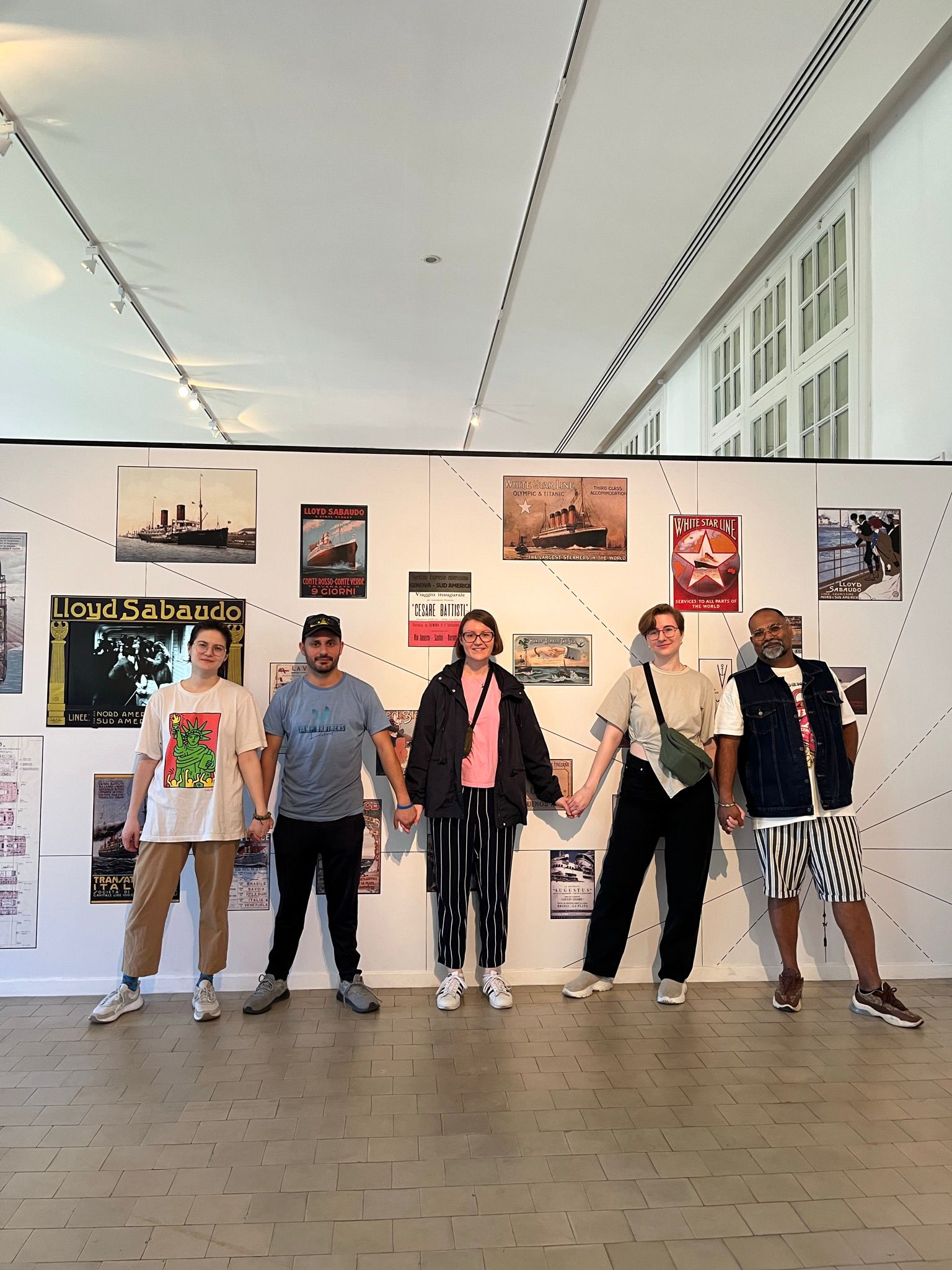
Then around the same time the FBI was raiding South Asian places of worship, especially mosques. So I was working with the ACLU on protecting Bangladeshi, Indian, Pakistani and Middle Eastern Muslim men. I was working in Coney island where one of the largest raids happened. Here I am – a queer person wearing long bellbottomed corduroys and flaming jackets – walking into straight desi uncles’ offices. As feminists and queer artists who were so separate from other groups, we had to sit with our patriarchs and figure out how to respond to this racialised reign of terror. That was an eye-opening experience for me because a lot of the community members – mosque workers, owners and Muslim organisations – saw in me a resource as somebody who’s providing training on how to respond to raids, somebody who’s bringing information and is also queer. I was grappling with this dialogue that was happening across differences. From there I got to politics of difference which says our differences don’t have to kill each other when we find each other in these coalitional spaces. We have to figure out the differences. When I was doing all of this work, friends were also calling me up saying ‘I’m undocumented. I’ve heard queer people can apply for asylum. Is there a way I can apply for political asylum?’. So I helped a couple of my friends in writing their asylum narrative and through this process I learned how people apply for political asylum. It was a learning of the legal system from doing work with friends.
When you’re in gay spaces, a lot of the white or American queer people can have anti-immigrant sentiments. You’re being read as an undocumented queer and then, you’re being discriminated against. So around this time, we co-founded the queer immigrant rights project in 2003 (QUIR). It was a support group space for helping predominantly undocumented LGBTQ immigrants and asylum seekers on how to apply for asylum, how to seek services for LGBTQ people, what kind of rights they have as a worker and also doing socials. Imagine 2003-2004 when New York City is highly securitised. There were FBI raids everywhere, there was surveillance. You’re afraid to even take the subway. You’re isolated as a queer person even within the South Asian community or in your community of origin. We decided to have barbecues and pride socials and create a social space by cooking food together and eating. That little time breathing together, dancing and eating was a very important political project. Creating a pro immigrant life space has become a very important part of my work.
Imagine 2003-2004 when New York City is highly securitised. There were FBI raids everywhere, there was surveillance. You’re afraid to even take the subway. You’re isolated as a queer person even within the South Asian community or in your community of origin.
Debanuj DasGupta
In 2006, there were major immigrant rights rallies around the country. Over 5 to 6 million high school students staged walk-outs from their high schools, demanding legal recognition of their parents. There was also a backlash – more raids, more detentions, more deportations and in New York I was a prominent leader in organising the queer contingent in these rallies. I received a fellowship to work with LGBTQ immigrants and also to insert a feminist and queer voice in the immigrant justice movement.

So all this time, I was undocumented myself in the USA due to the absence of a financial sponsor and I had found out that I was HIV positive in 2000 shortly after 9/11. I was afraid I wouldn’t receive treatment because there was an HIV/AIDS ban on immigration as I mentioned. In the summer of 2003 I was very ill and almost died. My T-cell count was 50 and my friends knew I had a couple of days. I was in the hospital in excruciating pain for 2 months. I couldn’t find a way to articulate how to use this experience and what to do with this very bodily experience of needles and syringes piercing and penetrating my body. I was like ‘what to do with this experience?’. So I started working on the HIV ban on immigration as part of QUIR and I received the Ford foundation fellowship. I was one of the key members in the lift-the-bar coalition. My role was to create community-based townhouses among undocumented immigrant HIV positive LGBTQ people to understand the impact of the HIV ban on immigration. We were successful to remove the ban in 2009 under George Bush junior which was a miracle. We fought for it. I was a key person in writing the policy alternatives that might be adopted.
So I started working on the HIV ban on immigration as part of QUIR and I received the Ford foundation fellowship. I was one of the key members in the lift-the-bar coalition.
Debanuj DasGupta
While I was writing this, I was traveling to New York on a greyhound bus from Ohio and I was arrested by ICE (Immigration and Customs Enforcement). I was found undocumented so I was put into detention. I was there for a week and now my case was in the court for removal proceedings, for deportation, which I was fighting. I had already received an approval for a green card back in 2002, but because I was HIV positive, I couldn’t follow through. My court case ran parallel to the removal of the HIV ban, which I was actually key in removing. That was the irony. Once again, it was clear to me who carries in their very body the effects of these laws. Us feminists talk about thinking about the body. It was very clear how I was carrying the HIV ban on immigration in my body. I came out of detention and I was writing the policy alternatives to this. The ban gets removed, I win my case, I’ve received a green card and all of this I narrated in a Ted talk at Ohio State University. My academic research about LGBTQ immigrants, refugees, and asylum seekers is borne out my own life experiences. I believe in writing theory in flesh; theory that is formed by reflecting upon my own life experiences. Thus I write about LGBTQ asylees/refugees creating community, survival networks in face of global displacements.
FII: What are your thoughts on the recent marriage equality verdict and other judgements on LGBTQ issues by the Supreme Court of India?
Debanuj DasGupta: I don’t believe in marriage. As a feminist, I believe marriage is about patriarchy and property ownership. But I do believe that there should be protection for living arrangements that are not heterosexual marriages, like two friends or sisters living together, or migrant workers living together. These are forms of queer household and there should be some kind of protection (for them). During the gay marriage movement in the US, between 2003-2010, I was part of what we called the ‘beyond gay marriage‘ movement demanding for recognition of multiple kinds of family formations.
In India, there has been a range of positive judgements from the Supreme Court like the reading down of the anti-sodomy provisions in 2018. In 2014, the National Legal Services Authority (NALSA) judgement gave the right to self confirmation of gender expression. We got the transgender bill, which is very problematic but some of the problematic elements have been removed. So there have been some positive strides towards decriminalisation, recognition of Trans communities. I am curious about these post-colonial nation states and us begetting a form of European liberalism that comes from our colonisers. I also am curious about us getting a human rights framework from the universal declaration of human rights which then gets adopted into the Yogyakarta principles, the application of sexuality and gender into human rights.
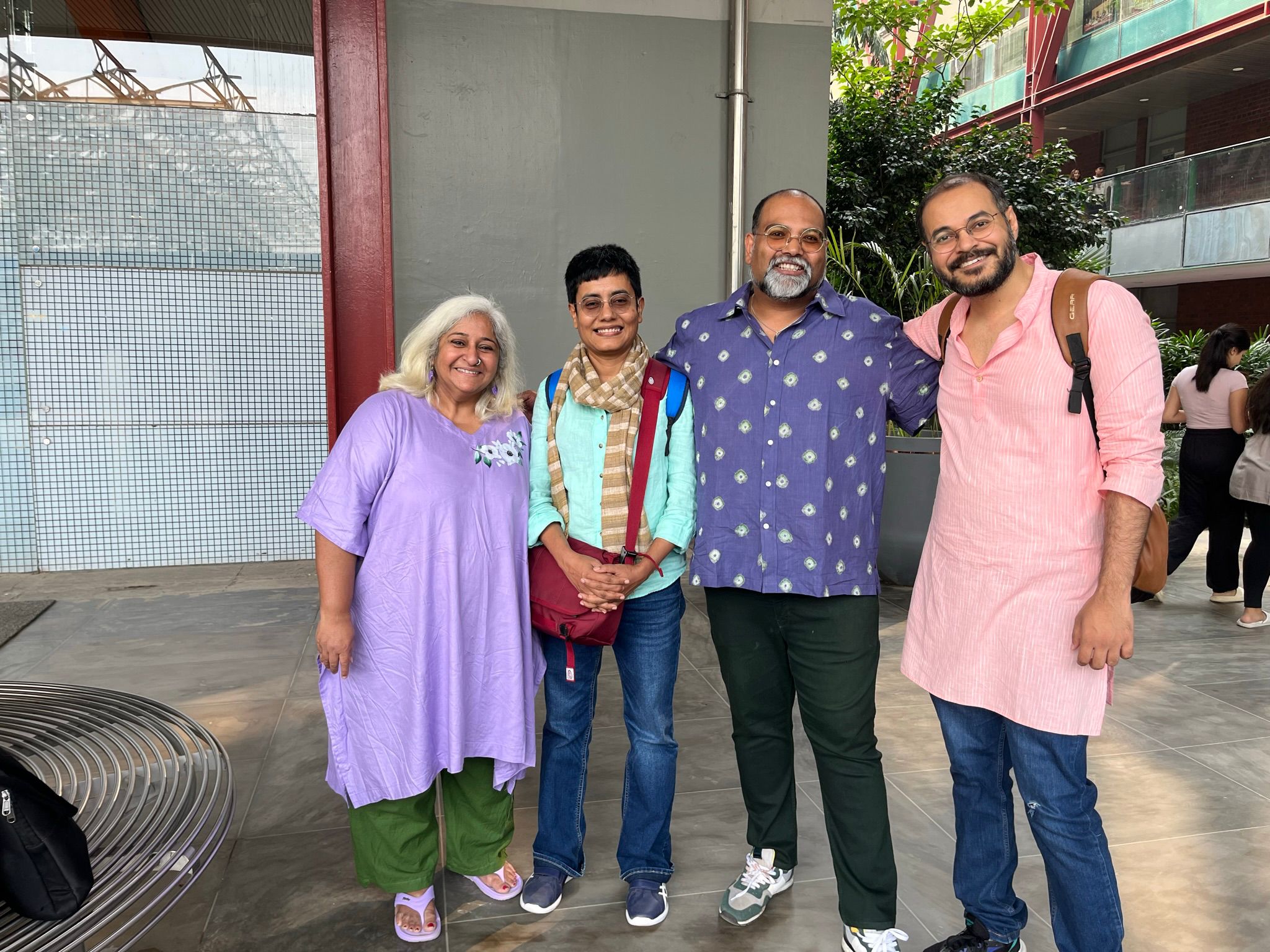
How do we grapple with these liberal codes and ideas about the human within a society such as South Asia where religion is in the everyday grammar of life in both positive and negative ways. If you read the NALSA judgement, you can see how the legal recognition of Trans communities in India is entangled with religiosities. In a recent article for GLQ, Ila Nagar and I do a close reading of the legal texts where the Supreme Court is talking about Hindu mythologies. All these mythical narratives have been invoked by the highest Court in the country in order to deliberate on constitutional rights. So you get secular constitutional rights by arguing that Trans people have always been part of our religion. So we go back to this entanglement between religiosities and legal recognition of difference in India.
FII: Tell us a bit about your work in documenting Trans queer experiences during COVID
Debanuj DasGupta: I have always written about viruses and pandemics. As a queer feminist geographer during the COVID-19 pandemic, I was very worried about the ‘Stay home, stay safe‘ mandate. The domestic is not a safe space for many women and queer people. There’s gender violence. Women had to go back to the traditional division of labour. Trans people were forced to return to their homes because there was no work. They have to go back to performing their dead gender. It was very important for me to document that narrative during the pandemic. What we were hearing about migrant workers narratives during the pandemic was a very straight masculinist idea of labour, of men who went to work and their wives and children who were waiting for them in their villages.
We heard how they came home on trains, how some of them died. The only time we saw women were women holding dead babies. I was really worried that the Trans queer experience with COVID is not being documented. So I’ve been working over the past 3 years with Trans queer communities from Manipur, Dhaka and Kolkata, collecting stories about experiences with border crossing. I was looking at Trans queer experiences about spatial restrictions and how the lock down and the closing of borders feel at the scale of the Trans queer body. What kind of access to vaccines and relief is found?
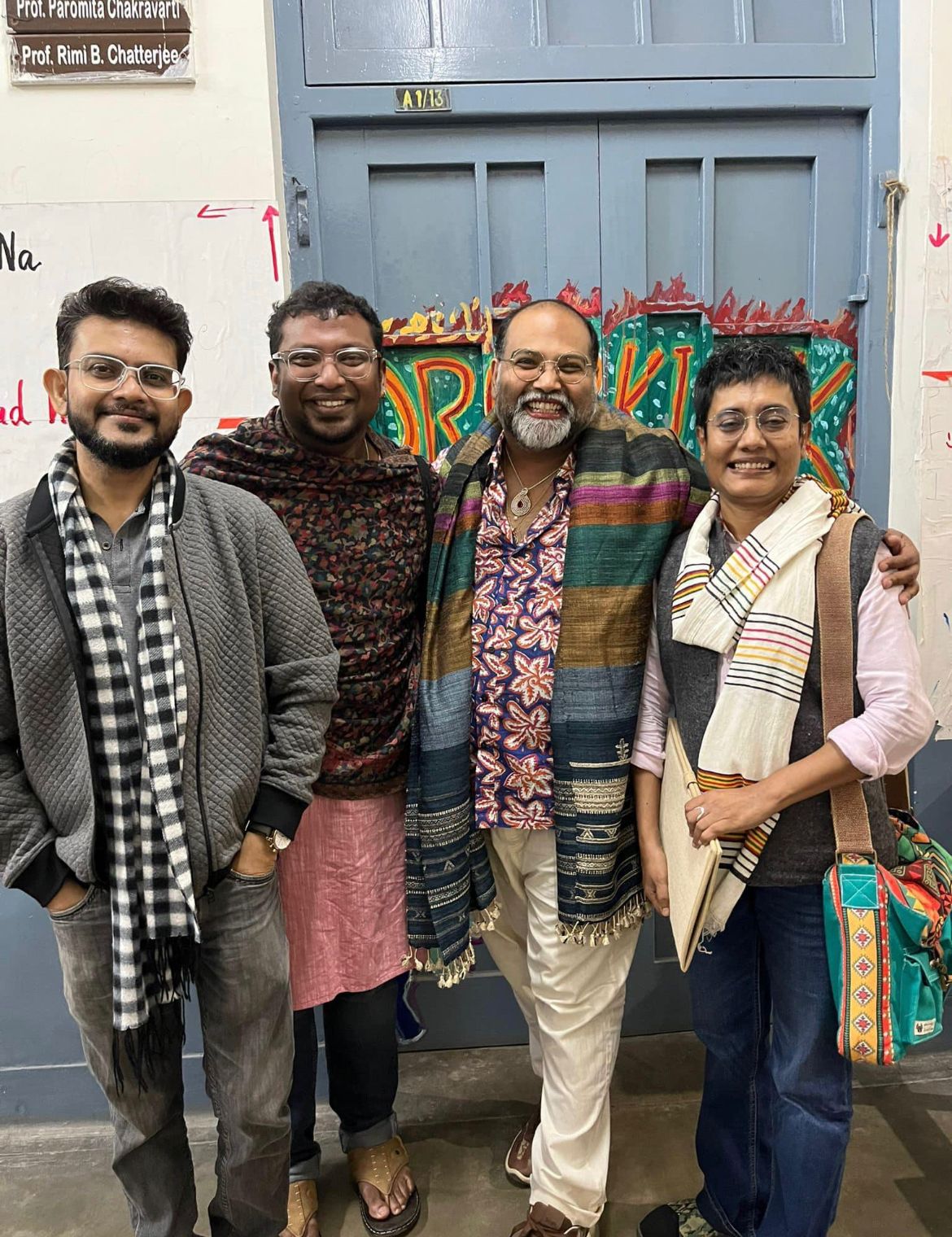
I’m producing academic articles based on what I call ‘Trans’-ing COVID. But we’re also producing a graphic novel and community organisations have worked with my graphic team. We have created zines. I think using hand painted or printed zines is also a really important part of my pedagogy. So I mentor scholars who work on queer and Trans migrations, affect theory, and assembling queer archives. I use zines as a method of engaging with theory. But I also look at zines and art as a form of archive of community narrative.
About the author(s)
Ananya Ray has completed her Masters in English from Jadavpur University, Kolkata, India. A published poet, intersectional activist and academic author, she has a keen interest in gender, politics and Postcolonialism.
